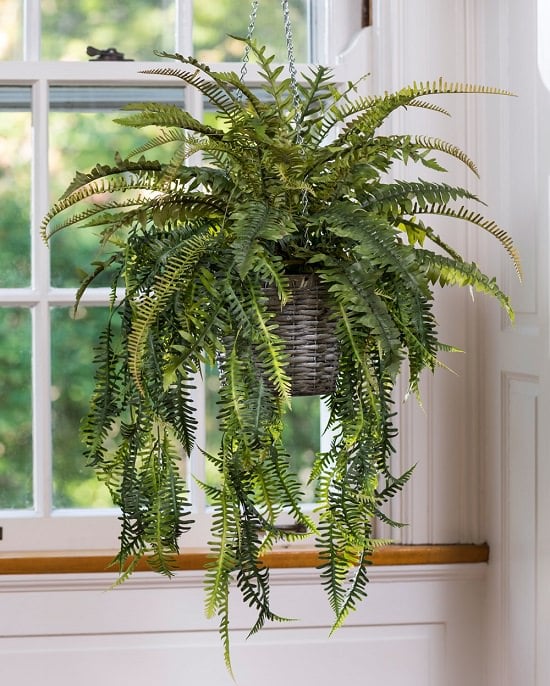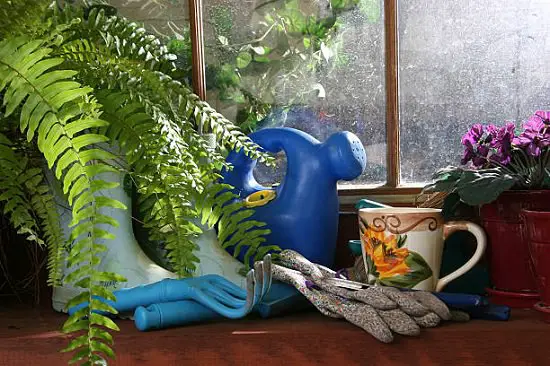Fern Plant Care is easy but knowing the basic requirements is essential when it comes to How to Care for Ferns!
Ferns are unique ornamental plants. They’re known for their evergreen eye-catchy appearance and unique textures of foliage that can enhance the beauty of any space, indoors or outdoors. Most of them are low maintenance, but there are some basic requirements, which you can fulfill when you know how to care for ferns.
Also Read: Best Ferns for Containers
Choosing the Right Location
Just like any other plant, ferns also have specific needs when it comes to their planting location. They don’t do well in full sun, and too much direct light can cause the plant to wither, and as a result, you see the scorched leaves. It’s best to grow them on a location that receives partial sunlight. They can also survive in all day long bright indirect sunlight. If you’re growing ferns indoors, placing them on the kitchen or bathroom window is a great option as both temperature and humidity are favorable for ferns at that spot.
Also Read: Growing Soft Tree Fern
Keep the Surroundings Humid
One thing that ferns love the most is humidity! So, if you live in a highly humid area, e.g., near the sea-shore, you are in luck. If your place is not humid, you can apply these methods to create a humid surrounding for ferns.
Also Read: How to Care for Lucky Bamboo Plant
1. Double potting the plants works for ferns and other humidity and moisture-loving plants. To double pot ferns, get one size larger planter than the planter of your fern plant.
- Take moss in a bowl, pour water over it and let it soak water for 4-5 hours.
- Fill this soaked moss in that large planter and place the smaller one up on it.
- Utilize the extra leftover moss to cover up any space left between the rim of two pots. All you need to do now is water when the moss turns dry.
2. Placing the pot over a saucer or tray filled with small pebbles and water is also an easy way to increase humidity. This happens because of the evaporation of water present in the tray. Make sure to keep the water level just below the top surface of pebbles.
3. By far using humidifier is the best way to increase the humidity for plants. Humidifiers are not expensive, and they can be a very useful gadget for gardeners. Must check out other ways to increase humidity for plants here.
They Love Moderately Warm & Constant Temperature
Not all ferns are tropical, but the majority of them are. Most of the fern varieties people grow indoors require a warm temperature for optimum growth. The ideal temperature for the ferns to reside in is 70 F (21 C). Many fern varieties can tolerate very low temperatures, but it’s better to keep them indoors when the temperature is lower than 50 F (10 C).
Also Read: Best Ferns for Hanging Baskets
Do Regular Watering
Apart from the humid surrounding, one more important fern plant care lesson is to keep the soil moist. It prefers moist substrate but must avoid the soggy and oversaturated soil. Never let the soil turn completely dry and water after checking its dampness.
Note: If you’re growing fern indoors in low light or a cold climate, water your fern only when the soil is slightly dry to touch, especially when the temperature goes below 60 F (15 C).
How to Fertilize Ferns
The nutrients of the potting soil deplete over time, and they won’t get replenished on their own when you’re growing ferns in a pot. You should fertilize the fern plants monthly to ensure an adequate and constant supply of nutrients to the ferns. Apply any balanced liquid fertilizer you use for your houseplant in half of the recommended dose on the product will work. Never fertilize newly planted ferns, wait for around 4-5 months or when you see the active growth after potting before feeding. Adding a layer of compost or aged manure to the topsoil also benefits the ferns.
Note: In cold climates, stop fertilizing in winter until February or March.
Pruning Ferns
When it comes to how to care for ferns, the light pruning is required. You can trim dead and damaged fronds any time of the year, except winters in a cold climate. Remove diseased or pest-infested parts whenever you see them. To shape the fern, you can get rid of older and unsightly fronds in the early spring, when the growing season is about to begin.
Also Read: How to Grow Sago Palm in Pots
Transplanting Ferns
All the plants tend to become root bound if they are not transplanted to a new and bigger pot. In the case of ferns, they don’t like to stay in a very large pot and loves to be in a slightly root bound state. But as soon as your fern plant outgrows the old pot and turn completely rootbound, transplant it into one size bigger pot.
Pests and Diseases
Ferns don’t suffer from many pest problems, but certain pests like mealybugs, scales, and mites may infest them. Here’re some of the ways to get rid of them. After bacterial blight, root rot is a common disease, which you can prevent by watering wisely. These overwatering tips are helpful.
Also Read: 11 Succulent Care Tips





